39 nutrient requirements that are listed as percentages on food labels
Nutrition labelling | Food Standards Agency vitamins and minerals must be expressed per 100g/ml and as a percentage of the reference intake (RI) Calculation of nutrient values The legislation allows for different methods of calculating the... Understanding Food Labels - Nutrition: Science and Everyday Application ... The FDA uses the following definitions for interpreting the %DV on food labels:4 5%DV or less means the food is low in a nutrient. 10% to 19%DV means the food is a "good source" of a nutrient. 20%DV or greater means the food is high in a nutrient.
7 Presentation of Nutrition Information on Food Labels - NCBI Bookshelf To assure that the nutrition information provided on a food label is conveyed in a manner that will allow the majority of consumers to use it successfully, a number of criteria need to be considered, including literacy of users, computational abilities, knowledge of English, and knowledge of the specialized vocabulary of nutrition labeling.
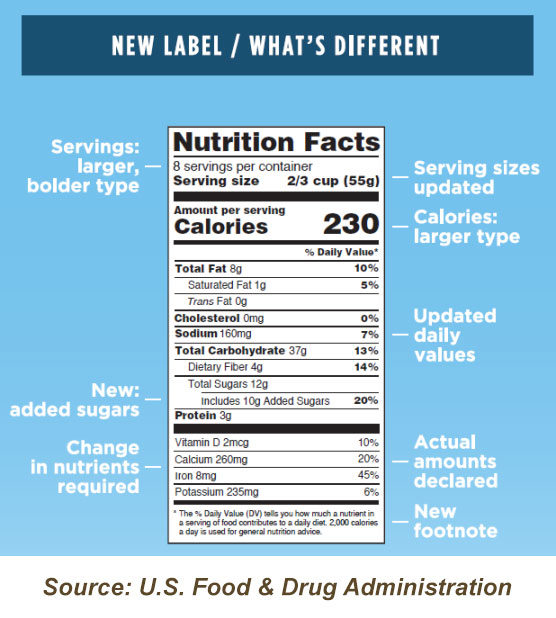
Nutrient requirements that are listed as percentages on food labels
Food Labels | Nutrition.gov Food labels can help you make healthy choices when buying food in grocery stores or restaurants. ... Learn about organic foods, requirements, and how they are labeled. ... has updated the Nutrition Facts label on packaged foods and beverages with a fresh design that will make it easier for you to make informed food choices that contribute to ... › food › new-nutrition-facts-labelHow to Understand and Use the Nutrition Facts Label | FDA Feb 25, 2022 · Overview. The information in the main or top section (see #1-4) of the sample nutrition label (below) can vary with each food and beverage product; it contains product-specific information ... Nutrition Labels 101: What's Required? What's Optional? Total carbohydrates is a required listing unless there is less than 1 gram, at which point it can be expressed as "contains less than 1 gram," or if less than 0.5 grams per serving, it can be expressed as zero. Sugars are the sneaky nutrient found naturally in many "healthy" foods, including fruit and milk.
Nutrient requirements that are listed as percentages on food labels. Food Labeling Requirements - TheMarketatdelval.com The requirements for nutrition are as follows: total calories, total fat, saturated fat, trans fat, cholesterol, sodium, total carbohydrate, dietary fiber, total sugars, added sugars, protein, vitamin D, calcium, iron, and potassium. The Castiron software platform is designed to assist independent food artisans in the creation, construction ... The Basics of the Nutrition Facts Label - Academy of Nutrition and ... You may need more or less than 2,000 calories per day. This means that you may need more or less than 100% DV that is listed on the package for some nutrients. Low is 5% or less. Aim low in saturated fat, trans fat, cholesterol and sodium. High is 20% or more. Aim high in vitamins, minerals and dietary fiber. › current › title-21eCFR :: 21 CFR 101.9 -- Nutrition labeling of food. (vii) When the amount of folate is declared in the labeling of a conventional food or a dietary supplement, the nutrient name “folate” shall be listed for products containing folate (natural folate, and/or synthetic folate as a component of dietary supplement, such as calcium salt of L-5-MTHF), folic acid, or a mixture of folate and folic ... How To Read Food and Beverage Labels - National Institute on Aging Or you can call the U.S. Department of Agriculture's Food and Nutrition Information Center at 301-504-5414. Understanding percent Daily Value (% DV) The percent Daily Value (% DV) tells how much a nutrient in a serving of the food or beverage contributes to a total daily 2,000-calorie diet.
› article › 440416-fda-dailyFDA Daily Nutritional Requirements to Help You Eat Right The Food and Drug Administration lists your daily nutritional requirements as daily values. Daily values are available for both micro- and macronutrients. ... DVs are what you'll often find on the back food label, listed in percentages (if not, you can also calculate these percentages easily). The DV shows the nutrients in a food, whether it's ... Nutrition Labelling - CFS Nutrition label must include the information on energy and seven nutrients specified for labelling (1+7), namely, protein, carbohydrates, total fat, saturated fatty acids, trans fatty acids, sodium and sugars. Furthermore, the nutrition label must list the amounts of any claimed nutrients. Food Labeling Requirements - LabelCalc New August 2019 FDA Industry Guidance for Food Labeling: Folate, Niacin, Vitamins A, D & E. As of August 2019, the FDA released new guidance for the industry concerning food labeling for certain micronutrients listed on the nutrition facts label on food products.. Folate, Niacin, as well as Vitamins A, D, E are all receiving a do-over in their appearance on the nutrition facts label to be more ... eCFR :: 21 CFR Part 101 -- Food Labeling Exemptions From Food Labeling Requirements: 101.100 - 101.108 § 101.100: ... except that ingredients in dietary supplements that are listed in the nutrition label in accordance with § 101.36 need ... the requirement for placement within the bottom 30 percent of the area of the label panel shall not apply when the declaration of net ...
ods.od.nih.gov › factsheets › Choline-HealthProfessionalCholine - Health Professional Fact Sheet FDA does not require food labels to list choline content unless choline has been added to the food. Foods providing 20% or more of the DV are considered to be high sources of a nutrient, but foods providing lower percentages of the DV also contribute to a healthful diet. Nutrition Facts Labeling — FDA Reader The following vitamins and minerals are required on the nutritional label "Supplemental Facts" section. They must be measured in terms of percentage of daily value and weight. The minimum requirement is listed below (must be listed in this order): Vitamin D, Calcium Iron Potassium Learn How the Nutrition Facts Label Can Help You Improve Your Health Nutrients Required on Label Vitamin D and potassium values are required. Calcium and iron will continue to be required. Vitamins A and C will no longer be required but can be included on a voluntary basis. Slight Decrease in Sodium Allowance The daily limit for sodium decreased slightly from 2,400 mg per day to 2,300 mg per day. Food Labeling & Nutrition | FDA Food labeling is required for most prepared foods, such as breads, cereals, canned and frozen foods, snacks, desserts, drinks, etc. Nutrition labeling for raw produce (fruits and vegetables) and...
Understanding Nutrition Facts on Food Labels - WebMD The percentages next to each nutrient -- such as fat, sodium, fiber, protein -- can help you determine whether a food is "high" or "low" in that nutrient. And 5% or less is considered to be "low,"...
The Lows and Highs of Percent Daily Value on the Label 5% DV or less of a nutrient per serving is considered low. 20% DV or more of a nutrient per serving is considered high. More often, choose foods that are: Higher in dietary fiber, vitamin D,...
Dietary Supplement Facts Panel vs. Nutritional Facts Panel Labeling Requirements for Food and Supplements. The facts panel provides all the relevant information about a product like serving size, servings per container, and dietary ingredients' names and quantities. The nutrition label also includes the %DV, showing how much a nutrient in a food serving contributes to the daily total.
NUTRITION: LESSON 2 NUTRIENT & FOOD LABEL FACTS - University of Cincinnati The food label, titled nutrition facts, can help you to choose foods within the pyramid groups. ... These numbers are the percentage per serving of this food as compared to the amount recommended in a 2,000 calorie diet. An example of these nutrient needs is usually listed at the bottom of the label. It gives you the exact amount of the ...
Food Labels | CDC - Centers for Disease Control and Prevention In general, eat more foods that are higher in vitamins, minerals (such as calcium and iron), and fiber. Eat fewer foods that are higher in added sugars, saturated fat, and sodium (salt), and avoid trans fat. Keep in mind that the % Daily Value of each nutrient, such as total fat of 10% in the example below, is based on eating 2,000 calories a day.
PDF Food Labeling Guide Answer: When protein is listed as a percent of the 50 gram DRV and expressed as % DV, ... Answer: The exemptions in 21 CFR 101.9(j) apply only to nutrition labeling requirements when the food bears no claim or other nutrition information. Small Business (21 CFR 101.9(j)(1) and 101.9(j)(18))
Nutrient Recommendations and Databases - National Institutes of Health Recommended intakes of nutrients vary by age and sex and are known as Recommended Dietary Allowances (RDAs) and Adequate Intakes (AIs). However, one value for each nutrient, known as the Daily Value (DV), is selected for the labels of dietary supplements and foods. A DV is often, but not always, similar to one's RDA or AI for that nutrient.
› nutritionsource › food-labelUnderstanding Food Labels | The Nutrition Source | Harvard T ... Chile implemented the Law of Food Labeling and Advertising in 2016, comprised of mandatory front-of-package (FOP) warning labels, restrictions on child-directed marketing, and the banning of sales in schools of all foods and beverages containing added sugars, sodium, or saturated fats that exceeded set nutrient or calorie thresholds. [1]
The New Nutrition Facts Label | FDA - U.S. Food and Drug Administration What's New with the Nutrition Facts Label Serving Size Calories Percent Daily Value Added Sugars Folate and Folic Acid Nutrition Facts Label and MyPlate Interactive Label Get more details on...
Solved Food labels include percentages for most nutrients | Chegg.com Food labels include percentages for most nutrients listed. What are these percentages based on? \% of Estimated Average Requirements (EAR's) \% of Dietary Reference Intakes (DRI's) \% of Daily Values (DV's) \% of Recommended Daily Allowances (RDA's) Question: Food labels include percentages for most nutrients listed.
› food › new-nutrition-facts-labelDaily Value on the New Nutrition and Supplement Facts Labels Feb 25, 2022 · For example, if the DV for a certain nutrient is 300 micrograms (mcg) and a packaged food or supplement has 30 mcg in one serving, the %DV for that nutrient in a serving of the product would be 10%.
ods.od.nih.gov › factsheets › Iodine-HealthProfessionalIodine - Health Professional Fact Sheet FDA does not require food labels to list iodine content unless iodine has been added to the food. Foods providing 20% or more of the DV are considered to be high sources of a nutrient, but foods providing lower percentages of the DV also contribute to a healthful diet.
Nutrition information panels - Food Standards Nutrition information panels (NIP) on food labels provide information on the average quantity of energy in kilojoules or in kilojoules and kilocalories and these nutrients: ... The figures in the 'quantity per 100 g' column are the same as percentages. For example, if 20 grams of fat is in the 'per 100 g' column, the product contains 20 ...
Nutrition Labels 101: What's Required? What's Optional? Total carbohydrates is a required listing unless there is less than 1 gram, at which point it can be expressed as "contains less than 1 gram," or if less than 0.5 grams per serving, it can be expressed as zero. Sugars are the sneaky nutrient found naturally in many "healthy" foods, including fruit and milk.
› food › new-nutrition-facts-labelHow to Understand and Use the Nutrition Facts Label | FDA Feb 25, 2022 · Overview. The information in the main or top section (see #1-4) of the sample nutrition label (below) can vary with each food and beverage product; it contains product-specific information ...
Food Labels | Nutrition.gov Food labels can help you make healthy choices when buying food in grocery stores or restaurants. ... Learn about organic foods, requirements, and how they are labeled. ... has updated the Nutrition Facts label on packaged foods and beverages with a fresh design that will make it easier for you to make informed food choices that contribute to ...
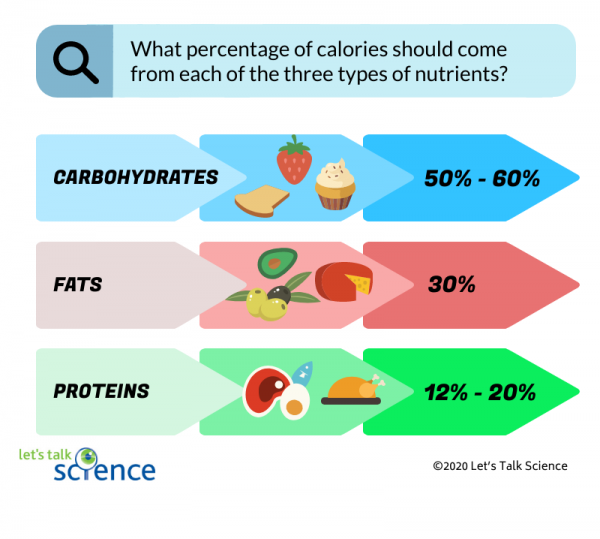
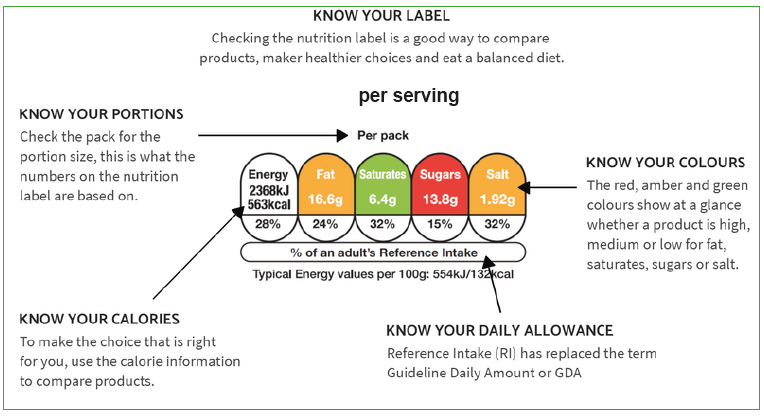


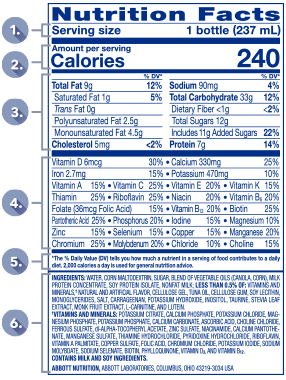

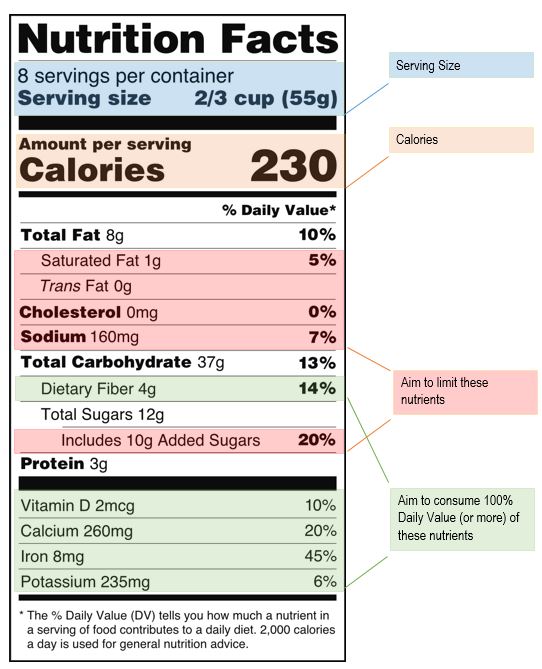

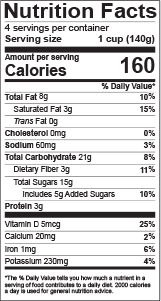


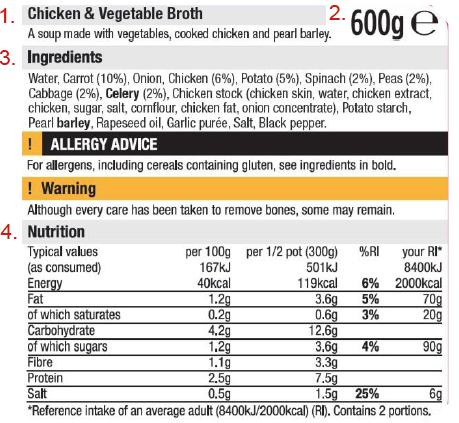



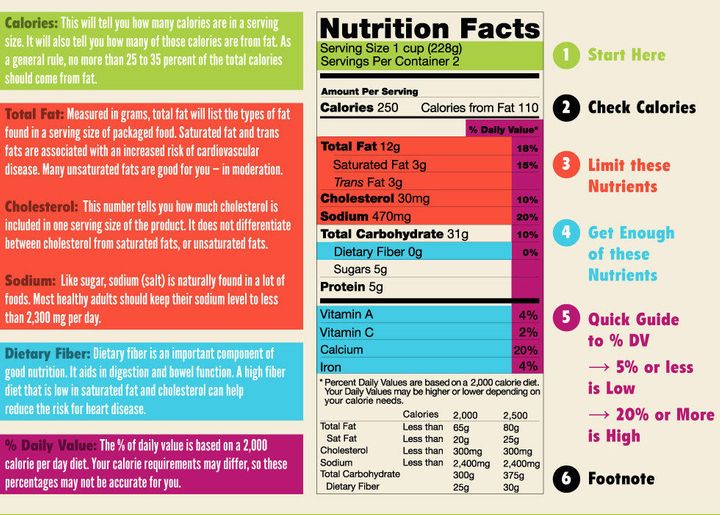
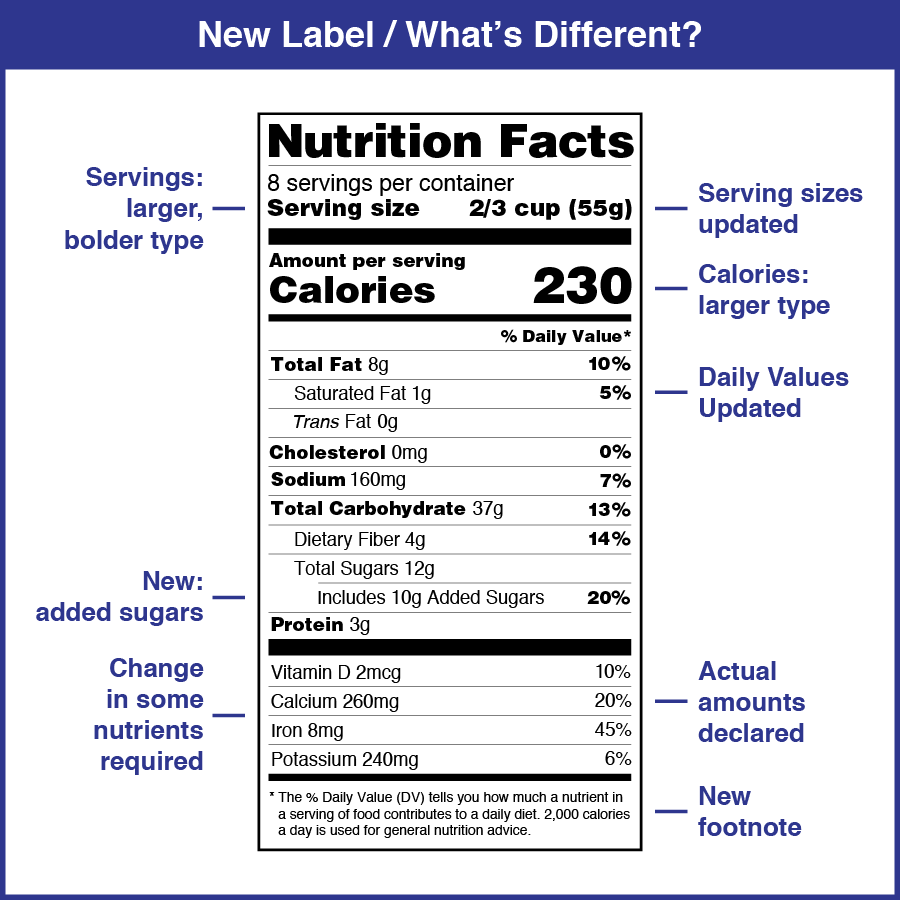
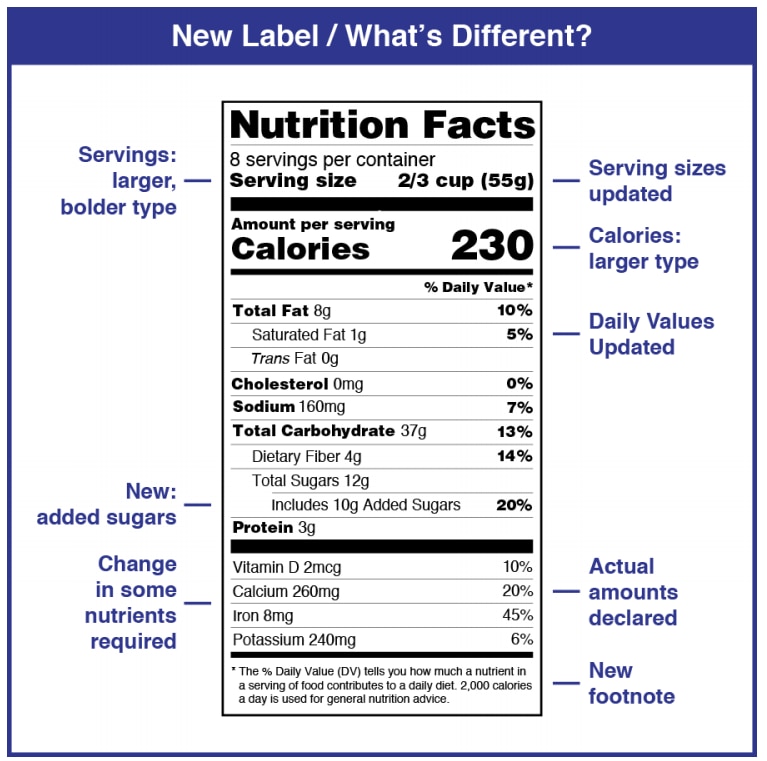
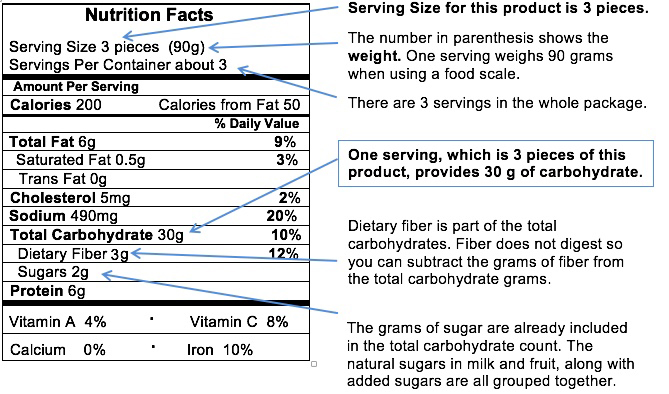


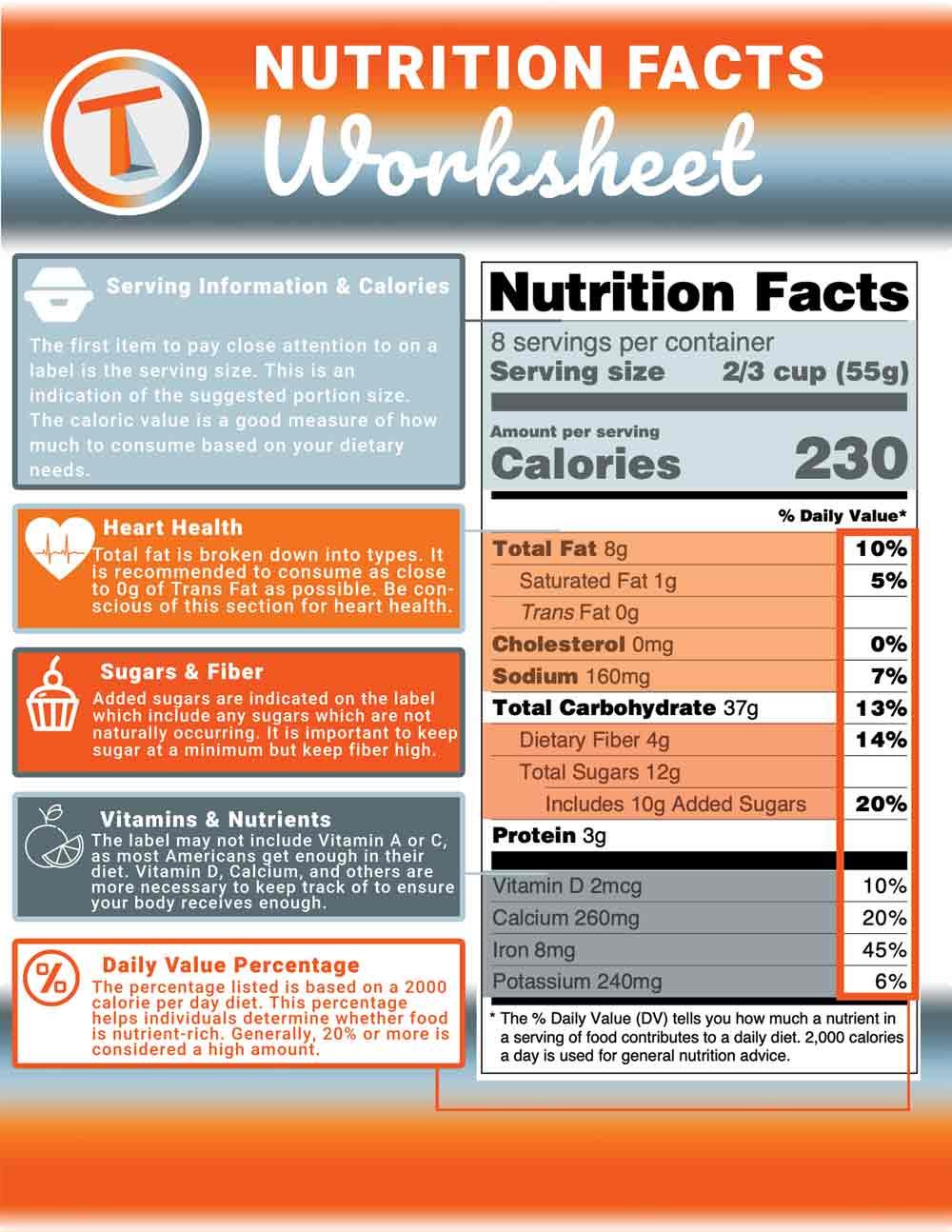
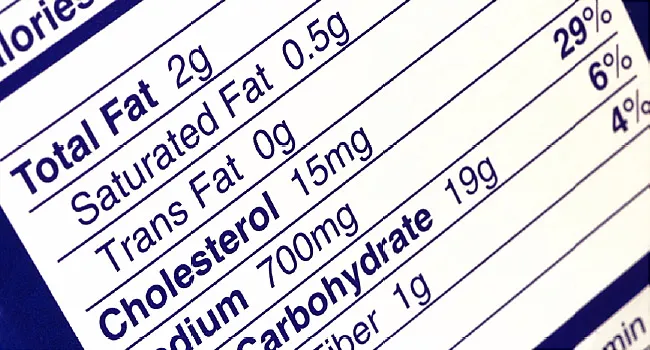
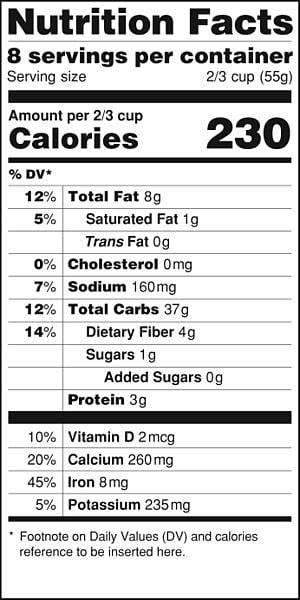



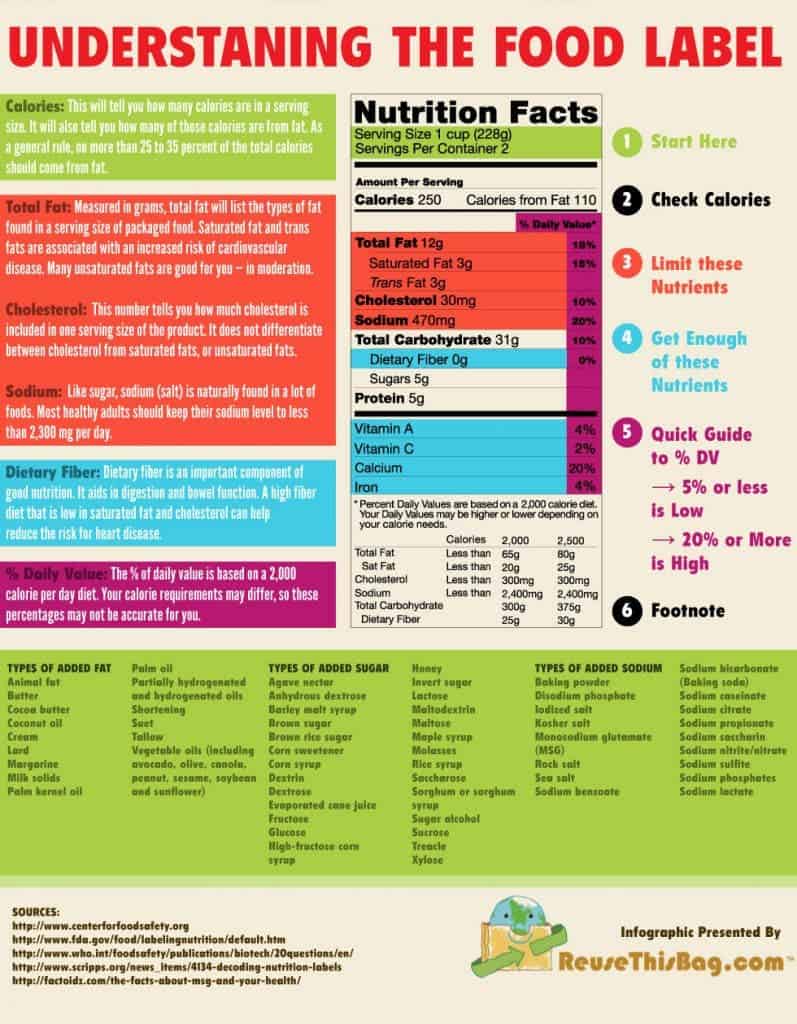
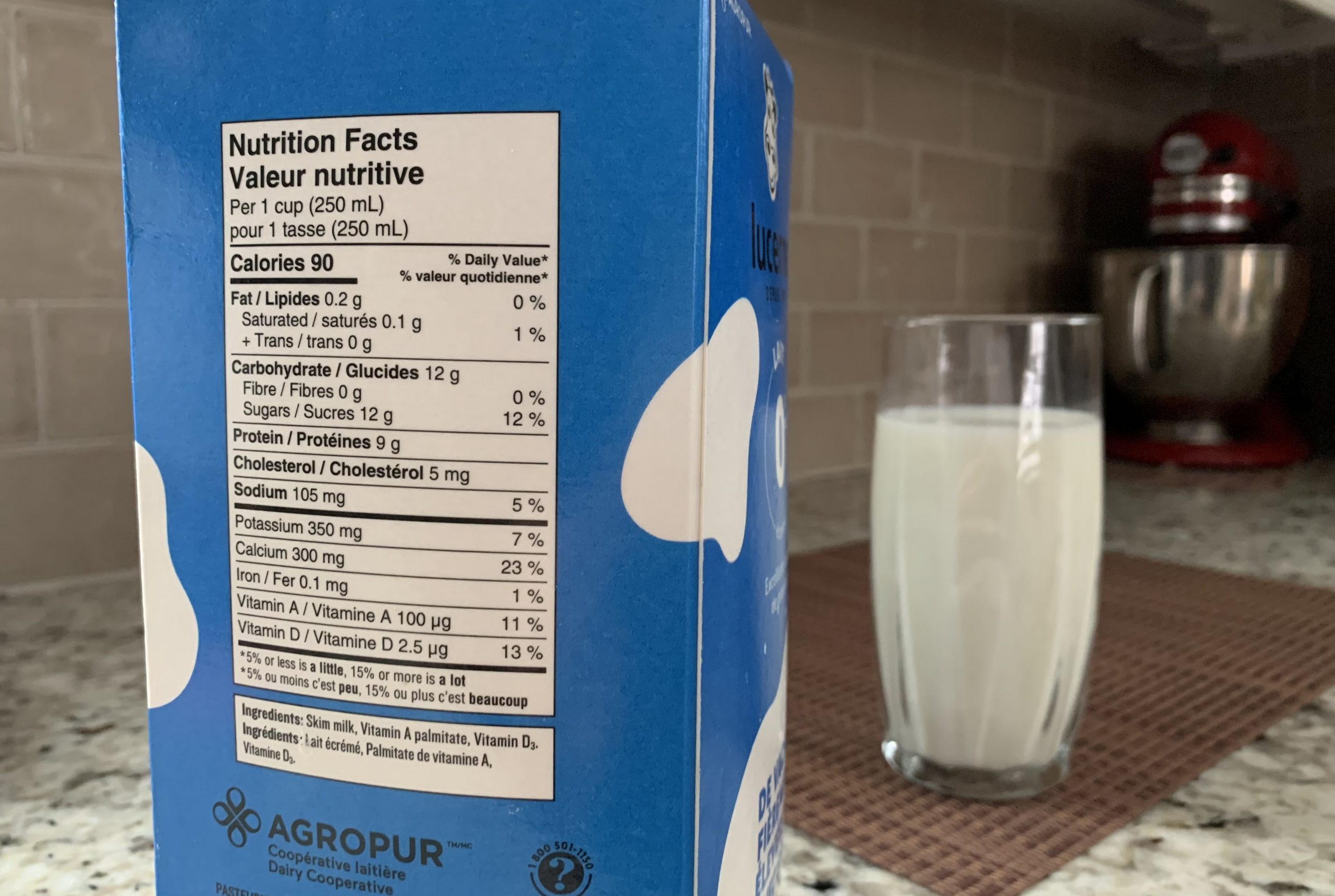
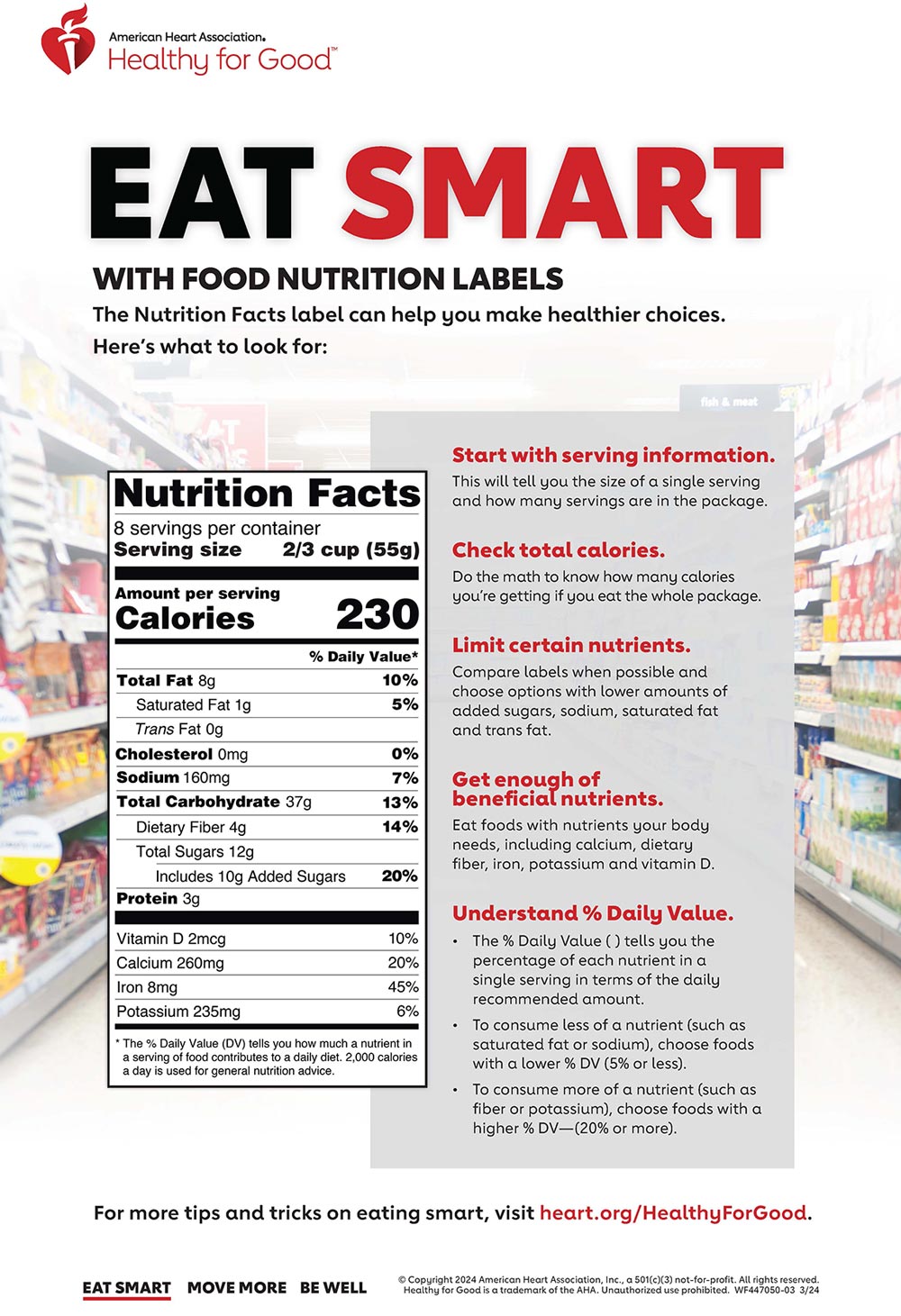
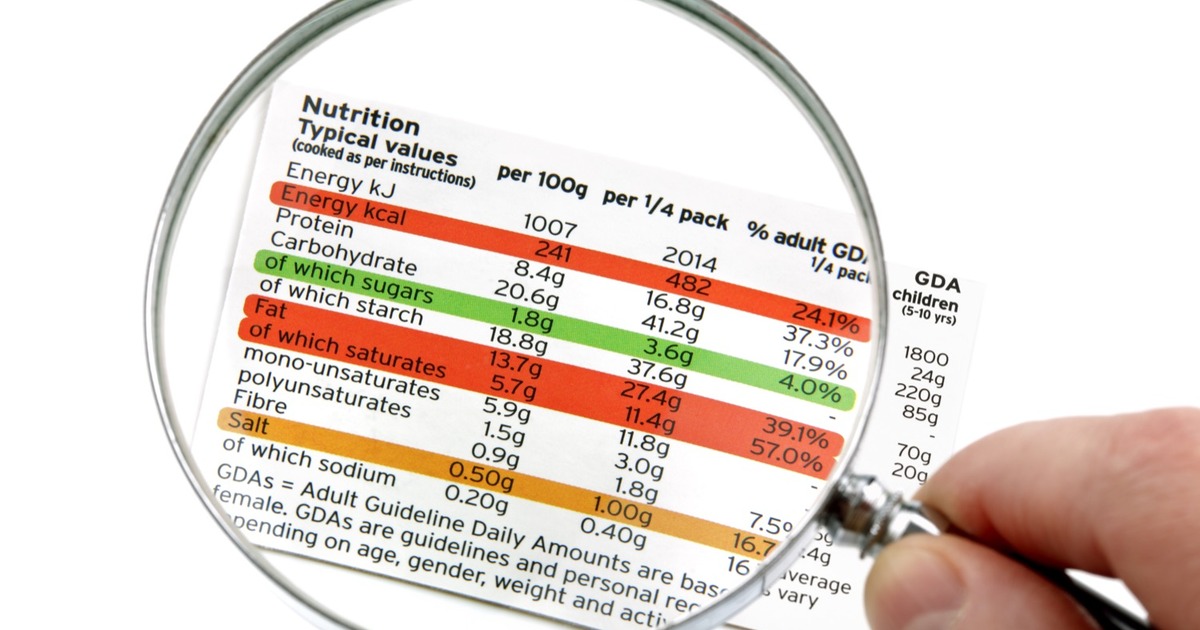

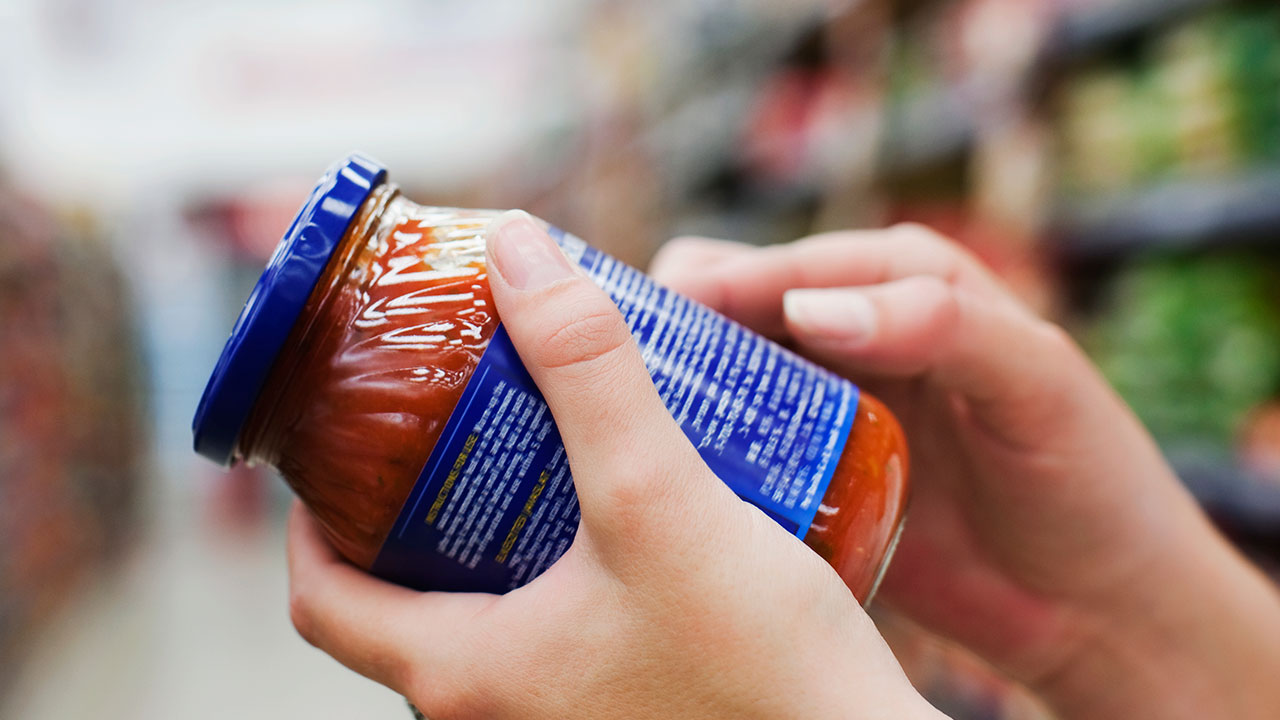
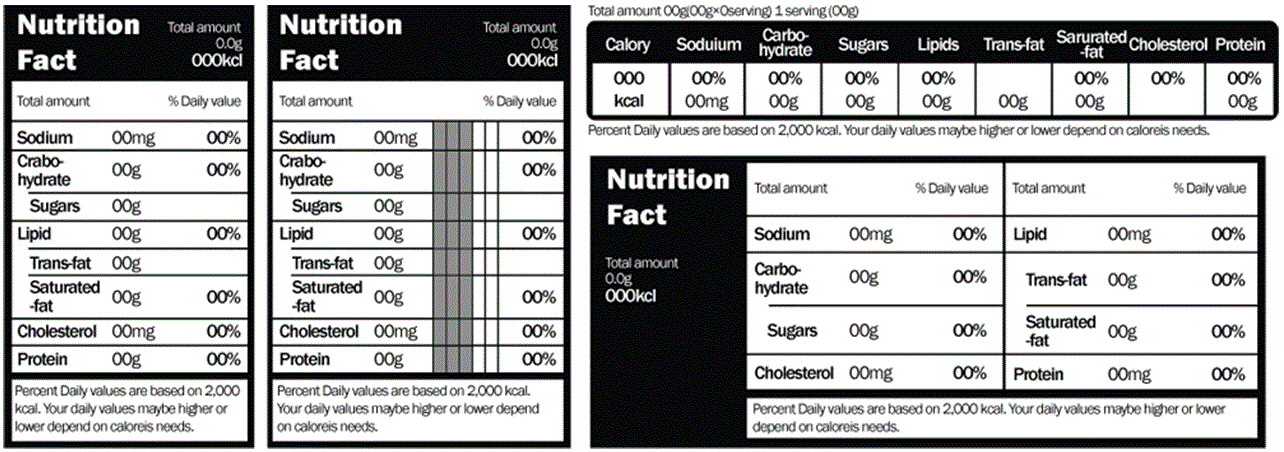


Post a Comment for "39 nutrient requirements that are listed as percentages on food labels"